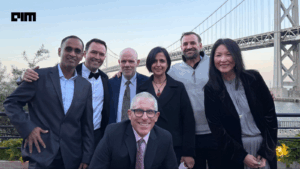Ropes & Gray, one of the world’s largest law firms with 1,500 attorneys, has launched an experiment allowing first-year associates to spend up to 20% of their required billable hours, exploring and learning AI instead of charging that time to clients. The program, called “TrAIlblazers,” represents a fundamental challenge to the traditional law firm economics that have governed legal practice for decades.
The initiative reveals a growing recognition among elite law firms that AI competency has shifted from luxury skill to mandatory requirement. Yet it also exposes a deeper institutional tension: the billable hour model, which remains the foundation of large law firm economics, actively discourages the productivity gains that AI enables
For over a century, law firms have measured productivity and profitability through billable hours. Associates advance through partnerships by demonstrating their ability to generate revenue through time spent on client matters. This creates what economists call a perverse incentive. When AI tools can accomplish in minutes what previously required days, there’s little financial motivation to deploy them fully.
Jane Rogers, a finance partner and member of Ropes & Gray’s management committee, framed the TrAIlblazers initiative differently. “We want to enable early-career lawyers to see the importance of this transformative technology, and also to empower them to have the time to spend to learn the tools,” she said. This represents a deliberate investment against the firm’s short-term financial interests.
At 1,900 billable hours annually for first-years, a benchmark Ropes & Gray lawyers “consistently meet,” the firm is essentially sacrificing approximately 400 hours of potential revenue per associate to fund AI education. For a firm charging clients $300-$400 per hour for junior associate time, that represents a significant opportunity cost per first-year associate.
Strategic Workforce Development
The explicit framing of TrAIlblazers as “a deliberate investment in our lawyers’ future” suggests Ropes & Gray views AI competency as essential to long-term competitive positioning. Rather than waiting for external pressure to force adaptation, the firm is proactively building capability within its associate pipeline.
“We will always have humans,” Rogers acknowledged, responding to concerns that AI threatens junior lawyer employment. “We will always have associates who need to be working on these things, and it’s about enabling them to do their jobs better.”
The program is currently piloting with first-year associates who joined last week. Amy Ross, chief of attorney talent at the firm, clarified that associates using AI credits “can’t bill matters to clients, but they may want to think about another way, or a more creative way, to do something that they’re being asked to do for clients.” This suggests the program aims to develop creative problem-solving alongside technical AI competency.
Ropes & Gray is not alone in recognizing AI’s importance. Firms like Orrick and Reed Smith have offered credits for innovation-related projects, though typically for fewer total hours. However, broader research reveals deep structural challenges.
A survey by the Association of Corporate Counsel and Everlaw found that nearly 60% of in-house counsel reported “no noticeable savings yet” from outside counsel’s use of generative AI. Even among those seeing benefits, only 13% observed reduced billable hours and 20% noted faster turnaround times. This disconnect between AI’s theoretical productivity gains and actual client savings reflects the billable hour model’s distorting effects.
Law firm consultant Bruce MacEwen of Adam Smith, Esq., argued that while there’s an opportunity cost to dedicating hours to non-billable activities, “training and education initiatives can be extremely worthy investments.” Young lawyers, he emphasized, “are the future of your firm.”
MacEwen anticipates other firms will follow Ropes & Gray’s approach as industry leaders tend to cluster around similar practices. “AI is going to be a mandatory skill set for associates now, and for partners in the near future,” he said. This prediction suggests TrAIlblazers could catalyze broader industry transformation.
The deeper significance of Ropes & Gray’s initiative lies in what it implicitly acknowledges. The billable hour model conflicts fundamentally with AI productivity. A recent SSRN paper argues that AI tools performing first-year-associate-level work undermine the pyramid structure that law firms depend upon for leverage and profitability.
Some firms are already abandoning billable hours entirely. Crosby, an AI-powered law firm, eliminated billable hours in favor of per-document pricing, achieving contract turnaround times under one hour. This model aligns incentives to maximize efficiency rather than time spent.
Ropes & Gray’s TrAIlblazers doesn’t abandon the billable hour, it carves out a limited exception. Yet this exception tacitly admits that maximizing billable hours conflicts with developing the AI competency that will drive future competitive advantage.










